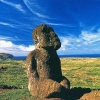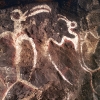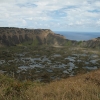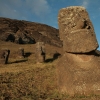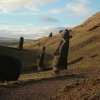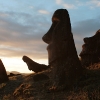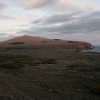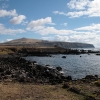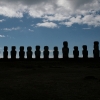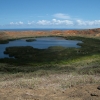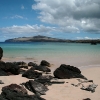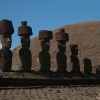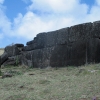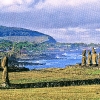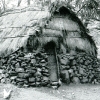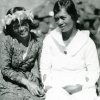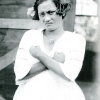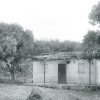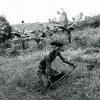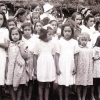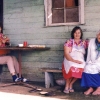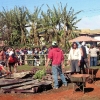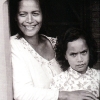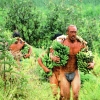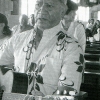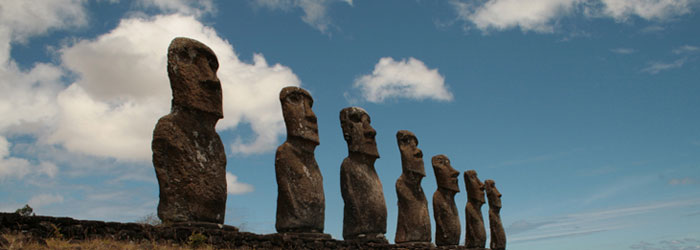Beliefs and funerary practices
Rapa Nui rituals would have begun at birth, with the cutting of the newborn’s umbilical cord. Rites of early childhood included the first haircut and the first wearing of a loincloth. Then there was the tattooing of the legs at eight years of age. Young people reaching puberty underwent the important rites of initiation into adulthood. According to chronicles written by Europeans visiting the island, these “ceremonies” were in fact schools of knowledge in which boys and girls—their bodies painted red and white and wearing ornaments called tahonga—were shut away for several months on the small island of Moto Nui, facing Orongo. There, they learned about Rapa Nui cultural traditions, skills, sacred knowledge and the art of war, among other things, from teachers and elders. Their schooling also included games of skill and physical strength. Some of these youth were selected to learn specific skills such as tattooing or writing, or to become sculptors or stoneworkers.
Ceremonies related to death also played an important role in Rapa Nui culture, especially the funerary rites of important family members. During these, the body of the deceased person was wrapped in a plant fiber cloth and left in the open air for one to two years beside the ahu, until it decomposed. The bones were then washed and deposited in a burial chamber excavated from the ahu itself. There, the soul of the deceased joined those of the ancestors, finally leaving the (living) family behind. After some more time had passed, the deceased family member was remembered at the ceremony of Paina, a feast offered for the bereaved family and an important social gathering. At the event, which was held in front of the ahu, a large effigy made of sticks, painted plant fiber cloth and a molded head—probably in thelikeness of the deceased—was erected. Today, the ahu of Tepeustill contains evidence of figures used during the Paina ceremony.
Magical power (maná) and supernatural spirits were always present in the Rapa Nui community. Any object, and especially those in the possession of powerful men, could be imbued with this supernatural power. Skulls engraved with designs relating to fertility (vulvas, for example) that have been found buried under the floors of dwellings and chicken coops probably belonged to powerful leaders. For their part, both good and evil spirits could be incarnated in animals or in objects, or be considered guardians when linked to a particular territory or family. One ancient Rapa Nui legend relates howone of HotuMatu’a’s companions caught a glimpse of these spirits and decided to reproduce their likeness in wood, making several powerful statues in human form. Those with protruding ribs and sunken stomachs represented the male spirits, while those with a flat profile and obvious sexual organs were female. From that mythical time to the present, figures like these have become one of the most traditional expressions of Rapa Nui art.



